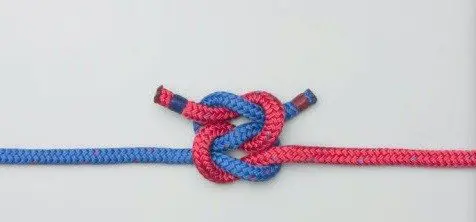How To Tie a Square Knot and the Four Times You Should NEVER Use Them
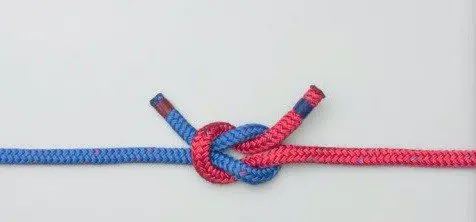
Here at Ready Tribe we like to try and bring you useful information that you can use in everyday life, as well as in a disaster or emergency situation. Today we are talking knots - specifically the square knot. If you want to know how to tie this beauty properly you can find our step by step guide below.
The square knot is one of the most familiar types of knot and is relatively easy to tie. It is often referred to by our British and Australian cousins as a reef knot and is a favorite of scouting groups across the world. It is a flat lying arrangement which can be very useful in situations such as tying bandages etc.
Although this kind of binding is widely used, it should never be used in a critical emergency situation as it can have a tendency to slip and even come unbound when lightly jiggled. It is vital that stronger knots should be utilized in critical situations or when supporting any weight.
What Are Square Knots Good For?
- Tying down reefing and furling sails on a sailboat
- Tying bandages and other first aid situations
- Tying your shoelaces on your favorite hiking boots
- Tying up parcels
- Binding items together i.e. firewood
When Not To Use Them
- Any critical or emergency situation VERY IMPORTANT
- When supporting anything of weight - including yourself or another person!
- When tying ropes of 2 different thicknesses together
- When using nylon or other smooth rope material
How To Make A Square Knot
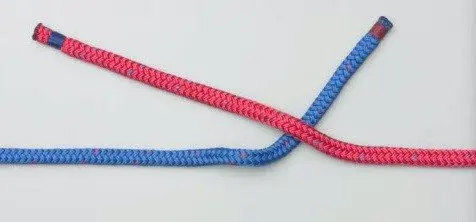
Step 1. Pass the end of rope held in your right hand (Red rope) over the end in your left hand (Blue rope).
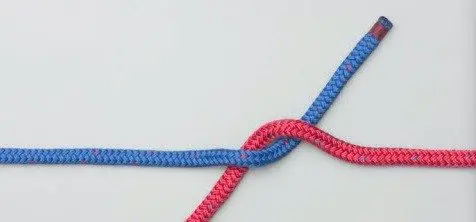
Step 2. Pass the red rope underneath the blue rope.
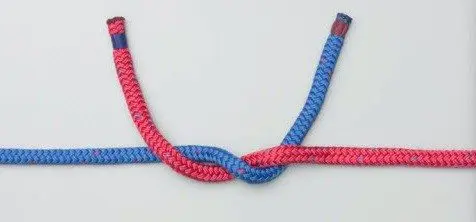
Step 3. Pass the red end back over the blue end
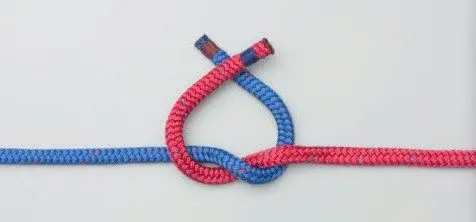
Step 4. Repeat the process
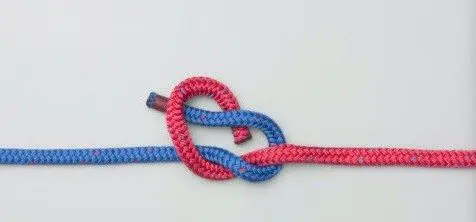
Step 5. Red end over and then under the blue end.

Step 6. Finally, pull the red end back over the blue and pull tightly.
The finished reef knot should be relatively flat and look symmetrical in shape.
Variations
Add an extra half knot for a little bit more security.
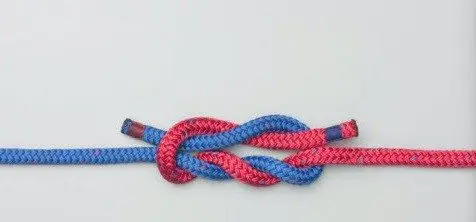
The surgeons knot has an extra half turn in the first half that helps to reduce slipping. This is often used for stitching during an operation.
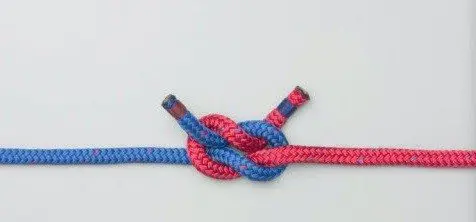
The granny knot is a result of tying the second part in the wrong direction .i.e. Instead of placing the red rope over the blue rope, it is tied underneath. The granny variation is even weaker than its correct cousin so if it isn't flat and symmetrical then re-tie it.
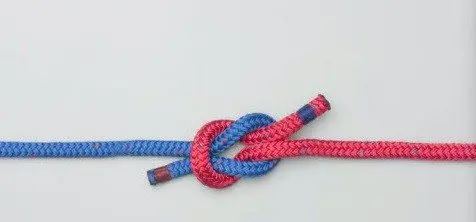
The thief knot has the ends of both ropes on opposite sides. Legend has it that sailors would use this kind of fastening to see if anyone had tampered with their bundle of belongings. This is an extremely weak variety and is actually more difficult to tie than a normal square knot.
Have you seen our Ready Tribe guide to making a grass rope? Find it here.
Watch The Video For A Full Demonstration
[cleveryoutube video="0Y_iorha2k4" vidstyle="1" pic="" afterpic="" width="500" quality="hd720" starttime="0:05" endtime="" caption="" showexpander="off" alignment="center" newser="" margin="true"]



